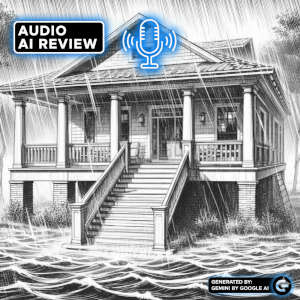AI Resources
Week 4: In-Depth Review of Duplication of Benefits Policy
Week 4: Assess funds for Duplication of Benefits under federal laws. Focus on FEMA's delivery sequence and congressional allocations like HUD CDBG-DR grants.
By Murray Wennerlund, published , updated .
Duplication of Benefits Avoidance
Editors Note:
This section named week 4 will include links to various resources and case studies, offering the information necessary for presentation to your local municipalities, state, and congressional representatives. Compiling the information requires time and dedicating this time may actually save you tens or hundreds of thousands of your own personal money.
This page is still being updated.
Examine funding through the lens of Duplication of Benefits, considering federal laws and agency policies. This section will provide a clear overview of available funds for you and your household, with a particular emphasis on households and home repair costs. The focus will be on the FEMA sequence of delivery and additional assistance provided through congressional allocations like HUD CDBG-DR grants.
Reviewing funding resources for duplication of benefits is a critical aspect of disaster recovery and assistance programs. Duplication of benefits refers to the situation where an individual or entity receives financial aid from multiple sources for the same purpose, leading to overcompensation or redundancy. This can occur in the aftermath of a disaster when various agencies, organizations, and programs offer assistance.
Duplication of Benefits does not extend to the following: private loans acquired from a bank or any other private lender, personal loans, personal savings, retirement funds, investments, etc. In essence, any form of financial assistance that is not backed by American Taxpayers Federal Tax Dollars is not considered a duplication of benefits, regardless of its utilization in your disaster recovery efforts.
Here's a breakdown of the key points in your description:
-
Financial Assistance from Other Sources:
- DOB occurs when an individual receives financial assistance from sources other than private parties, such as government agencies, nonprofits, or other public programs.
-
Cannot Be Used for the Same Thing:
- The core principle is that the assistance received from different sources should not be used for the same purpose. This is to prevent overcompensation or duplication of benefits.
-
Exception for Unmet Needs:
- An exception is made when the funds received are not sufficient to complete necessary repairs or address identified needs fully. In such cases, individuals may continue to seek assistance for unmet needs previously identified.
This careful coordination and avoidance of duplication are crucial for ensuring that the available resources are distributed efficiently and effectively to those in need. It also helps prevent misuse of funds and ensures that assistance is provided where it is most needed during the recovery process. Agencies and organizations involved in disaster recovery often have guidelines and processes in place to address and mitigate the risk of duplication of benefits.
Various authorities and regulations govern the duplication of disaster assistance benefits. Here are some selected authorities and regulations that are often relevant:
-
Robert T. Stafford Disaster Relief and Emergency Assistance Act (Stafford Act):
Relates to: Public and Private
The primary legislation outlining the federal government's role in providing disaster assistance. It establishes the framework for coordinating federal assistance with state and local governments. -
Code of Federal Regulations (CFR), Title 44 - Emergency Management and Assistance:
Relates to: Public and Private
CFR Title 44 outlines the federal regulations related to emergency management and disaster assistance. Specific sections within this title may address duplication of benefits. -
Federal Emergency Management Agency (FEMA) Regulations:
Relates to: Public and Private
FEMA has its own set of regulations that detail the eligibility criteria, application processes, and conditions for receiving disaster assistance. This may include provisions related to avoiding duplication of benefits. -
Department of Housing and Urban Development (HUD) Regulations:
Relates to:Private
HUD plays a role in providing housing-related assistance after disasters. Their regulations may address issues related to duplication of benefits, especially in the context of long-term housing solutions. -
Office of Management and Budget (OMB) Uniform Administrative Requirements:
Relates to: Public and Private
OMB provides guidance on uniform administrative requirements, cost principles, and audit requirements for federal awards. These requirements may include provisions related to avoiding duplication of benefits. -
Internal Revenue Code (IRC):
Relates to: Private
Provisions in the Internal Revenue Code may be relevant, especially regarding tax implications related to disaster assistance. -
Public Assistance Program and Policy Guide (PAPPG):
Relates to: Public
FEMA's PAPPG provides detailed information on the Public Assistance program, including guidelines to avoid duplication of benefits for public entities and nonprofit organizations. -
Individual Assistance Program and Policy Guide (IAPPG):
Relates to: Private
FEMA's IAPPG outlines policies and procedures for providing Individual Assistance, including guidelines related to avoiding duplication of benefits for individuals and households. -
National Flood Insurance Program (NFIP) Regulations:
Relates to: Public and Private
Regulations governing the NFIP, which is managed by FEMA, may include provisions related to avoiding duplication of benefits for flood-related disasters. -
State and Local Laws and Regulations:
Relates to: Public and Private
State and local governments may have their own laws and regulations related to disaster assistance and the avoidance of duplication of benefits.

